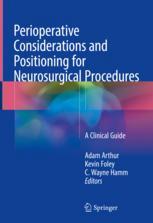

Most ebook files are in PDF format, so you can easily read them using various software such as Foxit Reader or directly on the Google Chrome browser.
Some ebook files are released by publishers in other formats such as .awz, .mobi, .epub, .fb2, etc. You may need to install specific software to read these formats on mobile/PC, such as Calibre.
Please read the tutorial at this link: https://ebookbell.com/faq
We offer FREE conversion to the popular formats you request; however, this may take some time. Therefore, right after payment, please email us, and we will try to provide the service as quickly as possible.
For some exceptional file formats or broken links (if any), please refrain from opening any disputes. Instead, email us first, and we will try to assist within a maximum of 6 hours.
EbookBell Team

5.0
88 reviewsThere are relationships that exist between neuroanesthesia, neurosurgical procedures, individual patient pathology and the positioning of a patient for said procedure. A comprehensive examination of these relationships, their association with patient morbidity/mortality and how to approach these issues in an evidence-based manner has yet to become available. Positioning related injuries have been documented as major contributors to neurosurgical/neuroanesthesiology liability.
This text examines these relationships. It provides considerations necessary to the correct positioning of a patient for a neurosurgical procedure for each individual patient and their individual pathology. In other words, this text will demonstrate how to construct the necessary surgical posture for the indicated neurosurgical procedure given the individual constraints of the patient within the environment of anesthesia and conforming to existing evidence-based practice guidelines. Sections will address physiological changes inherent in positioning in relation to anesthesia for neurosurgical procedures, assessment of patient for planned procedure, as well as considerations for managing problems associated with these relationships. Additional sections will examine the relationship between neurosurgical positioning and medical malpractice and the biomechanical science between positioning devices and neurosurgical procedures.
Neurosurgery and its patient population are in a constant state of change. Providing the necessary considerations for the neurosurgical procedure planned under the anesthesia conditions planned in the position planned, often in the absence of multicase study literary support, without incurring additional morbidity is the goal of this text.